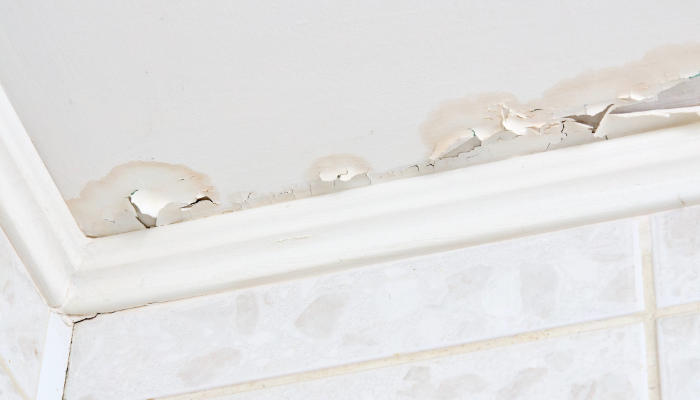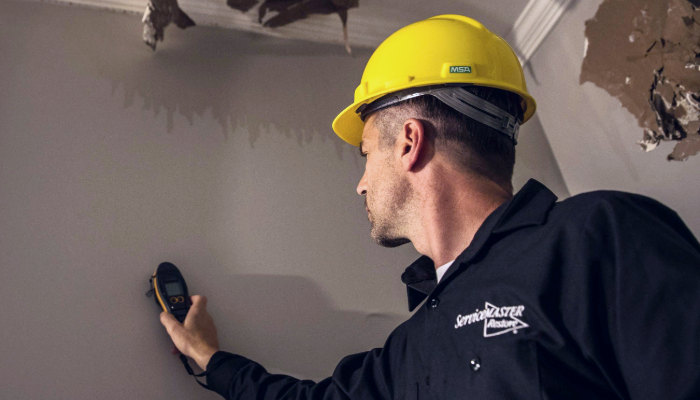
A Complete Guide for Businesses
When disaster strikes, understanding what water damage restoration involves can make the difference between a swift recovery and a costly disruption. Water intrusion from sources like HVAC systems, roof leaks, or natural disasters can cause extensive harm to commercial properties, threatening operations, assets, and the safety of everyone inside. In this guide, we’ll walk you through the water damage restoration process, typical costs and timelines, and the reasons why professional services are critical for any business facing affected areas after water intrusion.
What Is the Meaning of Water Restoration?
Water damage restoration is more than just cleaning up standing water — it’s a comprehensive, professional process designed to return your property to its pre-loss condition. Restoration typically involves several key steps: mitigating the immediate damage, drying out structures with specialized drying equipment, cleaning and sanitizing the affected areas, and completing necessary structural repairs. Unlike a simple cleanup effort, true restoration addresses not just the visible water but also hidden moisture that, if ignored, can lead to mold growth and long-term damage to your property. Even small leaks, if left untreated, can cause costly issues over time.
Types of Water Damage That Affect Commercial Buildings
Water damage in commercial buildings can occur from a variety of sources, each requiring a tailored response. Common causes include:
- Roof leaks and clogged or broken drainage systems
- Burst water heaters and malfunctioning sprinkler systems
- Faulty HVAC systems leading to condensation and leaks
- Flooding or heavy rain from natural disasters
- Hidden water leaks from appliances, pipes, or bathroom fixtures
In addition, restoration experts classify the types of water damage based on contamination level. Understanding the category is crucial, as it dictates safety measures and restoration strategies.
- Category 1: Clean water from a sanitary source (e.g., a broken pipe)
- Category 2: Greywater with some contaminants (e.g., dishwasher or washing machine overflow)
- Category 3: Blackwater contaminated with hazardous substances (e.g., sewage backups or floodwaters)
What Happens During the Water Damage Restoration Process?
When you call in a professional team, the water restoration process begins with a thorough inspection of the damaged area to assess the extent of water intrusion. Technicians will then extract any standing water using powerful pumps and vacuums, followed by deploying industrial-grade drying equipment like dehumidifiers and air movers to remove hidden moisture from walls, flooring, and the air itself.
Once the space is dry, cleaning and sanitization begin to ensure that no mold spores or contaminants are left behind. In many cases, deodorization treatments are used as well, particularly if fire or smoke damage is also involved. Finally, structural repairs — from replacing drywall to restoring flooring — are completed to bring the building back to its original state. Commercial properties often require specialized approaches because of their size, complex layouts, and unique operational needs.
How Long Does Water Damage Restoration Take?
The timeline for water restoration can vary significantly. Factors such as the size of your commercial property, the extent of the water intrusion, the materials affected (like drywall, carpet, or wood), and how quickly action is taken all impact recovery time. For minor issues, such as isolated small leaks, restoration might be completed within two to three days. In cases of severe flooding or widespread damage, the process may take one to two weeks or longer. Immediate response is key — the longer water sits, the more extensive and expensive the damage becomes.

Does Drywall Need to Be Replaced After Water Damage?
Whether drywall can be salvaged depends largely on the severity of the exposure. If the drywall has only absorbed a small amount of clean water and mold has not begun to form, it may be possible to dry and restore it. However, if the material has been heavily saturated or contaminated by greywater or blackwater, full replacement is usually necessary. Professional restoration teams are trained to evaluate the structural integrity of materials in commercial properties and will recommend the safest, most cost-effective solution to protect your facility from future problems like mold growth.
What Is the Typical Cost for Water Damage Restoration?
The water damage restoration cost depends on several factors, including the size of the affected areas, the amount of water involved, the types of materials impacted, and the labor and time required for complete recovery. On average, businesses can expect to pay between $3 and $7 per square foot for commercial restoration services. It's important to note that most insurance policies cover sudden water events, such as a burst pipe, but may exclude long-term issues like neglected drainage systems or unresolved small leaks. Understanding your insurance coverage — and working with restoration professionals who can assist with claims — can make the financial side of recovery much smoother.
Preventing Future Water Damage in Commercial Properties
Preventative maintenance is crucial for protecting your business. Scheduling regular inspections of critical systems like HVAC units, roofing, sprinkler systems, and plumbing can help catch vulnerabilities early. Keeping gutters and drainage systems clean and functioning properly will minimize risks associated with heavy rain. Installing water detection sensors near potential problem areas, such as water heaters, bathrooms, and break rooms, can also provide an early warning of trouble. Just as important, addressing small leaks immediately can prevent them from escalating into major, costly events. Having a commercial emergency response plan in place — outlining immediate steps and contacts in the event of water damage — ensures that your business can react quickly and efficiently if disaster strikes.

Why Professional Water Damage Restoration Is Essential for Businesses
Hiring a professional water damage restoration company is essential for minimizing downtime, reducing long-term costs, and safeguarding your assets and staff. Experts can act quickly to prevent secondary damage, such as mold growth, and offer critical support when navigating complex insurance claims. In many cases, businesses that suffer water damage also face related challenges like smoke or fire damage, especially after natural disasters. Partnering with a trusted provider like ServiceMaster Restore ensures that you have access to a full range of restoration services, all coordinated to get you back up and running as quickly as possible.
Protect Your Business with Professional Water Damage Restoration
Understanding what water damage restoration involves empowers business owners and facility managers to act decisively when the unexpected happens. Early intervention reduces downtime, limits repair costs, and helps preserve the integrity of your operations. If your commercial property experiences water damage, don't wait. Contact ServiceMaster Restore today for expert, 24/7 commercial water damage restoration and recovery services.

